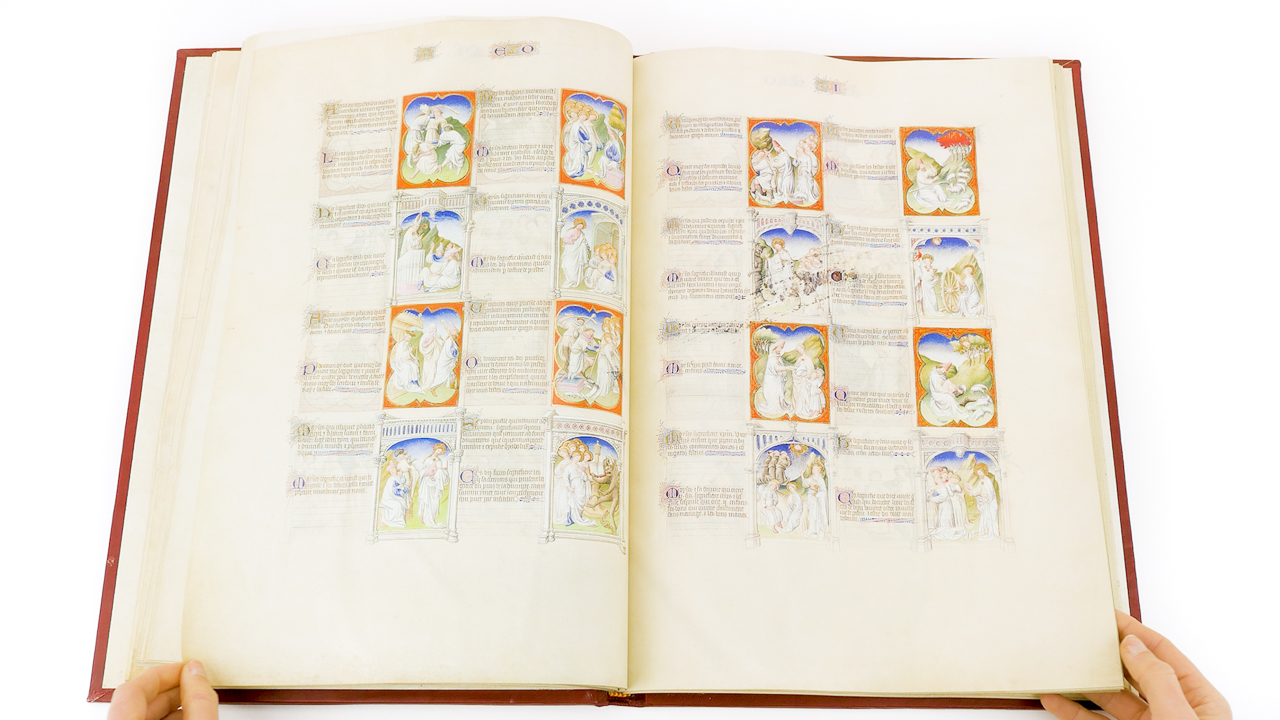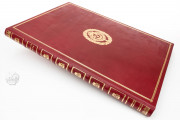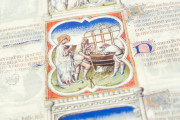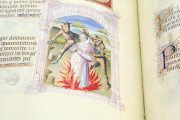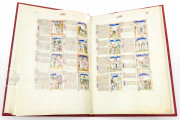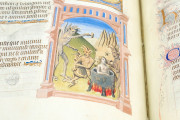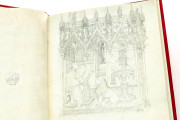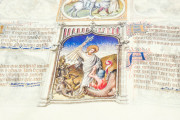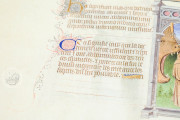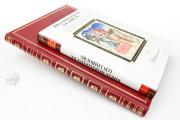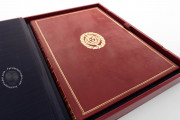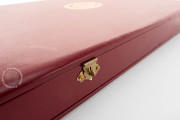The Bible Moralisée of the Limbourg Brothers is a fragment of a moralized Bible, a picture book of biblical stories and their understanding in terms of Christian history and doctrine. It pairs images of episodes from biblical history presented in biblical order with their "moralizations" (how they are to be understood to relate to the lives of medieval Christians). The manuscript, produced in Paris, was entirely written before 1405, and work on the miniatures continued in spurts for nearly a century. Its 1,340 column miniatures are the work of many artists.
The content is arranged in columns, with four images in each column. The first and third are biblical scenes, and the second and fourth are moralizations. The framing alternates between hexafoils and fictive architecture, emphasizing the alternation and differentiation between pictorial scripture and commentary.
Three Princely Patrons
Philip "the Bold" (1342-1404), Duke of Burgundy, employed at least two of the three Limbourg brothers, Jean and Pol, to illuminate the book. They received payments in 1402 and 1404, but the work was left substantially unfinished at Philip's death.
More than a generation later, in the mid-fifteenth century, René I (1409-1480), Duke of Anjou and King of Naples and Jerusalem, engaged the Master of the Psalter of Jeanne de Laval, the Jouvenal Master, and the Master of the Geneva Boccaccio to continue the work. Later in the century, Georges Trubert and four anonymous artists supplied more miniatures under the patronage of Aymar de Poitiers, Count of Saint-Vallier.
The Limbourg Brothers
The Limbourgs provided underdrawings for and wholly or partially painted about 10% of the more than 2,500 anticipated miniatures (18% of the surviving miniatures). They directly copied a Bible Moralisée made for Jean II (1319-1364), King of France (Paris, Bibliothèque nationale de France, MS fr. 167). Nevertheless, their luminous painting set the tone for the enterprise, which is, in its early pages, a dazzling example of the Limbourgs' art.
Further Work on the Paintings
The model manuscript was no longer available to the painters who continued work on the book. They seem to have followed the Limbourgs' underdrawings when they existed. They also had the picture captions that constitute the book's text and probably also written instructions to guide them.
Text in French and Latin
The picture captions were written in Gothic Textualis by two scribes slavishly copying the earlier manuscript. In the book's early pages (fols. 1-32), each caption appears in Latin, introduced by a gold initial, followed by a French translation introduced by a blue initial. All have delicate red and blue pen flourishing. The remaining initials are only partially executed, if at all.
Unfinished, Yet Valued
The surviving portion of the Bible Moralisée extends from Genesis to chapter 12 of Isaiah. That portion, which included all the pages with any illumination in some state of completion, was bound by 1518 when the manuscript was in the French royal library. The 152 unilluminated leaves were left unbound and kept, but not for much longer. Fragments from that bundle of loose leaves would eventually come to be used in binding other books. The current binding of red morocco dates from the eighteenth century and bears the arms of Louis XV (1715-1774), King of France.
We have 1 facsimile edition of the manuscript "Bible Moralisée of the Limbourg Brothers": Biblia Moralizada de Los Limbourg facsimile edition, published by Patrimonio Ediciones, 2010
Request Info / Price
